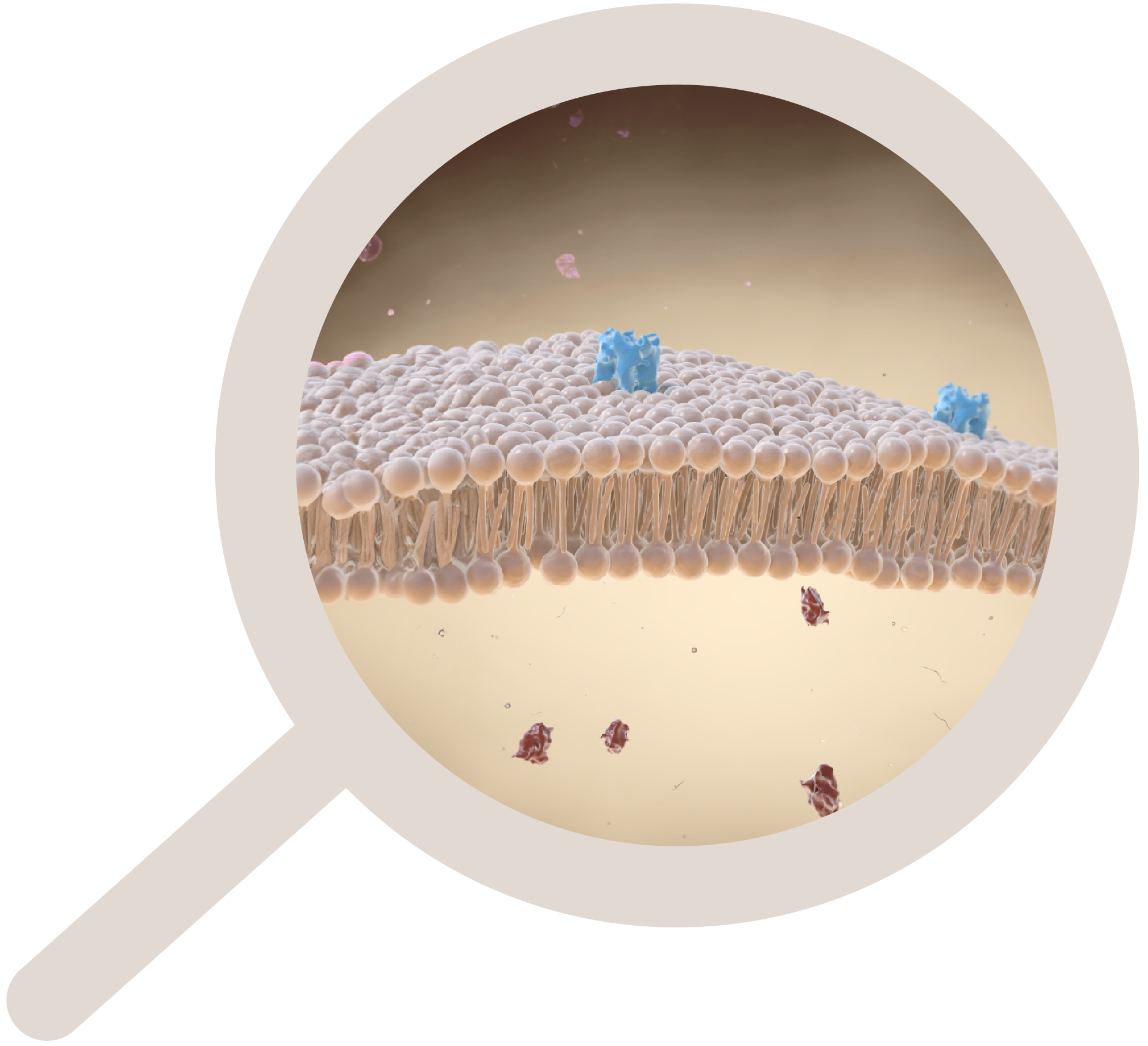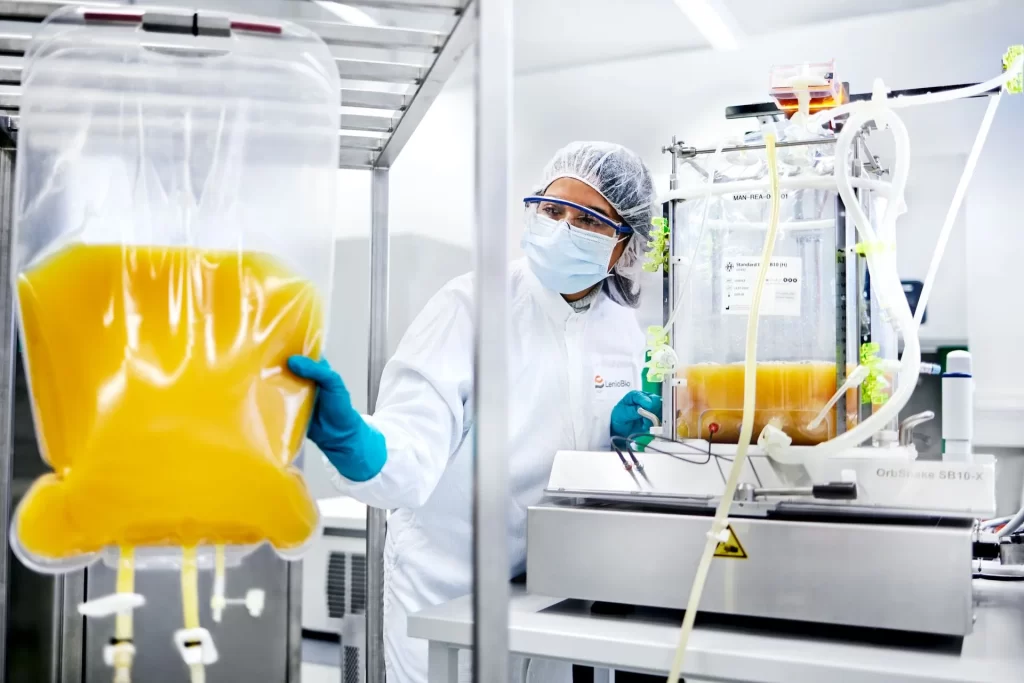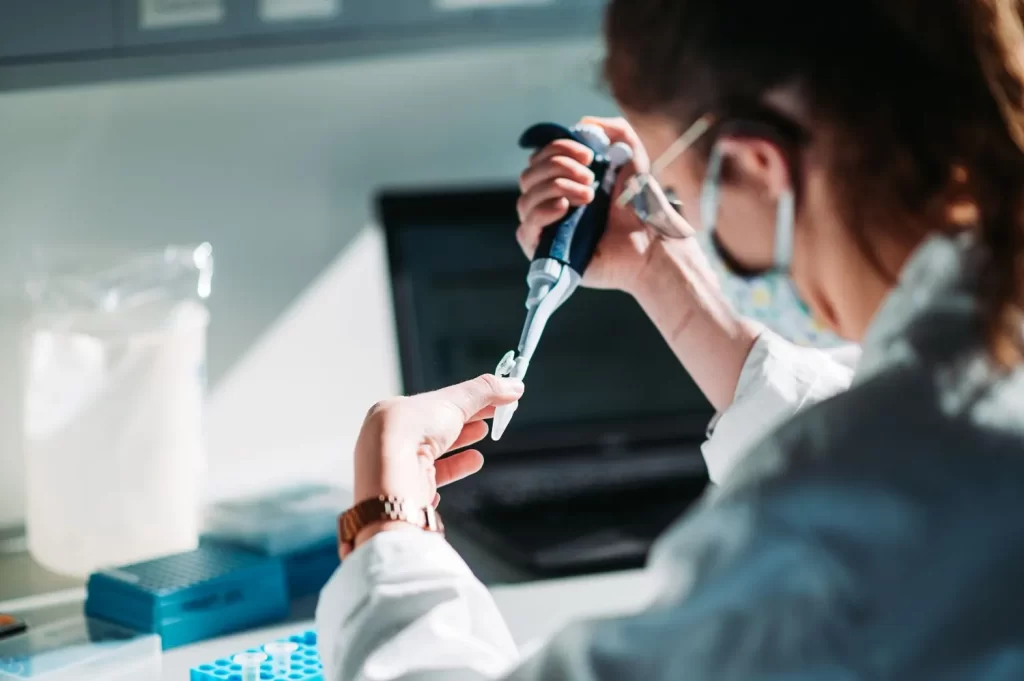A Therapeutic Target Like No Other
GPCR membrane proteins, characterized by the presence of a 7 transmembrane domain, are the largest protein family encoded by the human genome. GPCRs are subdivided into 5 main families based on structural homology: Rhodopsin (class A), secretin (class B), glutamate (class C), adhesion, and Frizzled/Taste2 1.
With its unmatched therapeutic potential, GPCRs as therapeutic targets are in a league of their own. They account for ~35% of FDA-approved drugs achieving the status of the most common class of therapeutic target 2. There are around 527 FDA-approved drugs and 60 drug candidates in clinical trials targeting GPCRs 1.
Our Protein in Profile — Cannabinoid Receptor CB2
The CB2 receptor plays a crucial role in regulating various cellular responses, such as inhibiting adenylyl cyclase and promoting MAPK activation, marking it as a promising therapeutic target. It is well-expressed in immune cells and is known to modulate immune responses from inflammation to neuroprotection. Furthermore, activating CB2 receptors or use of CB2 agonists has been shown to reduce pain responses in a wide range of animal models 3.
How ALiCE® Creates Bigger Yield
Membrane proteins, including GPCRs, are notoriously challenging to express due to low yields and a propensity to aggregate. Obtaining adequate protein quantities to perform characterization and for hit/lead generation is a bottleneck with standard heterologous cell-based protein expression systems and more often requires time-consuming cell engineering for large-scale production.
Top concerns include:
- Low expression levels: GPCRs are typically expressed at low levels, complicating efforts to obtain sufficient protein for analysis or drug development 4
- Protein misfolding and instability: Protein folding into active three-dimensional structures is often inefficient in heterologous expression systems 4
- Lack of post-translational modifications (PTMs): PTMs, such as glycosylation, phosphorylation, and palmitoylation, are often crucial for GPCR function but are challenging to replicate accurately outside of a native cellular environment 5
- Low scalability: Scaling up GPCR expression for applications requiring high yields is limited by factors such as low expression levels, host cell toxicity, and the inherent instability of the proteins 4
- Use of harsh detergents: When using cell-based systems, harsh detergents, such as SDS, LDAO, OG, and DDM, are required to extract the protein embedded in the host cell membrane 4
Cell-free systems can help circumvent these issues inherent to cell-based expression.
What is ALiCE®?
ALiCE® is a scalable eukaryotic cell-free protein expression system capable of producing even the most complex proteins in under 48 hours. The proprietary cell-free lysate derived from Nicotiana tabacum c.v. BY-2 cells contains all of the machinery necessary to implement eukaryotic post-translational modifications, without specific optimizations.
The Cell-Free Solution
Here we show the successful expression of a challenging GPCR membrane protein, cannabinoid receptor CB2, in ALiCE®—a eukaryotic plant-based cell-free system containing native membrane structures derived from endoplasmic reticulum and Golgi, called microsomes. Following expression, CB2 was purified, and its activity was confirmed by an in-lysate ligand binding assay.

Successful Expression of CB2 in ALiCE®
- Reliable expression of CB2 from pALiCE01 and pALiCE02 expression vectors as shown by Western Blot analysis 6
- With cell-free expression using ALiCE®, a remarkable yield of up to 200 μg/ml of lysate could be achieved without extensive optimization 7

Membrane Protein Activity Maintained in Crude Cell-Free Lysate
- The activity of CB2 expressed in ALiCE® was comparable to purified CB2 expressed in a cell line, even though the assay was performed using crude lysate 6
- Crude lysates from ALiCE® cell-free reactions can be used directly for functional assessment, bypassing the need for harsh detergents to free the proteins from the membrane

Benefits of ALiCE®?
ALiCE® can provide access to novel targets through its exceptional ability to produce difficult-to-express and complex protein classes, such as GPCR membrane proteins. This is applicable whether the end goal is to identify a small molecule or a biologic drug.
A Unique Approach to Functional Membrane Protein Expression
One of the hallmarks of the ALiCE® cell-free system is the presence of native microsomes derived from the endoplasmic reticulum and Golgi. The microsomes provide a scaffold for co-translational integration of membrane proteins during cell-free production. This method of co-translational insertion is significant because it mimics the natural process of membrane protein insertion and folding in cells, improving the chances of obtaining functional proteins. 6
A Scalable System for Rapid Expression of Functionally Active Membrane Proteins
Soluble, functionally active membrane proteins can be produced using the ALiCE® cell-free expression system in a streamlined 24-hour reaction. Moreover, the system can currently be scaled to a volume of 10 L.
Replication of Complex Post-Translational Modifications
The ability to introduce glycosylation and disulfide bonds, along with its eukaryotic attributes such as translocation and compatibility with eukaryotic chaperones sets the ALiCE® system apart from other cell-free systems. The lysate contains all the necessary components to implement complex post-translational modifications without specific optimizations.

References
- Yang D, et al. G protein-coupled receptors: Structure- and function-based drug discovery. Signal Transduct Target Ther. 2021;6(1):7
- Hauser AS, Attwood MM, Rask-Andersen M, Schiöth HB, Gloriam DE. Trends in GPCR drug discovery: New agents, targets and indications. Nat Rev Drug Discov. 2017;16(12):829-842
- Atwood BK, Mackie K. CB2: A cannabinoid receptor with an identity crisis. Br J Pharmacol. 2010;160(3):467-479
- Segers K, Masure S. Cell-free expression of G Protein-Coupled Receptors. Curr Protoc Protein Sci. 2015;81:29.14.1-29.14.29
- Zhang B, Li S, Shui W. Post-translational modifications of G Protein-Coupled Receptors revealed by proteomics and structural biology. Front Chem. 2022;10:843502
- LenioBio Application Note: A eukaryotic cell-free platform for reliable expression of functional membrane proteins. https://www.leniobio.com/membrane-protein-application-note-sign-up
- ALiCE®: A versatile, high yielding and scalable eukaryotic cell-free protein synthesis (CFPS) system” (in pre-print at www.biorxiv.org/content/10.1101/2022.11.10.515920v1.full)


